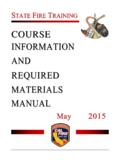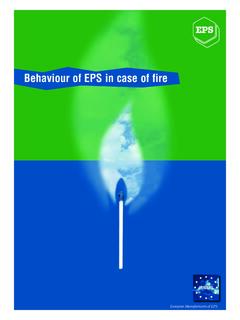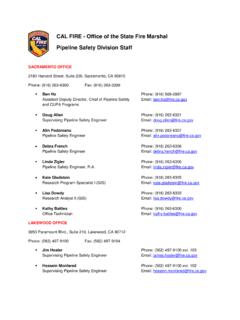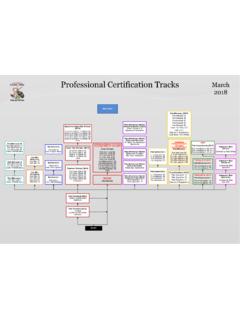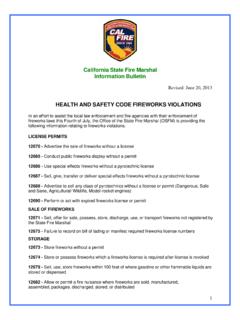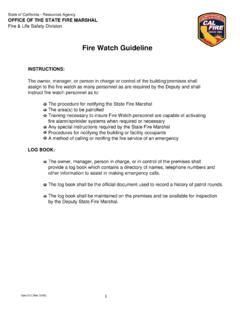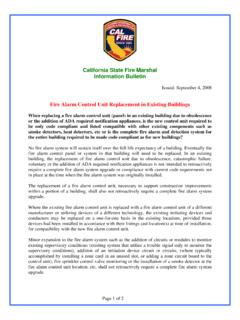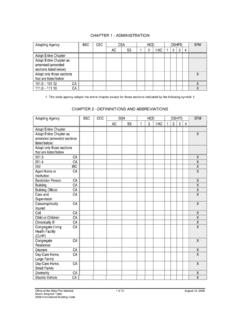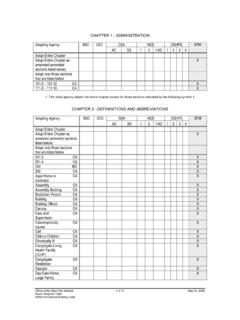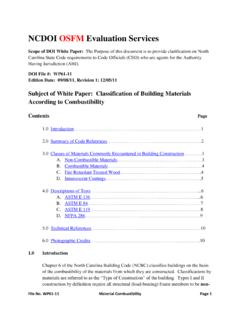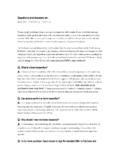Transcription of Frequently Asked Questions (FAQ) on ... - …
1 Frequently Asked Questions (FAQ) on Carbon Monoxide (CO) Devices As of July 1, 2011, the Carbon Monoxide Poisoning Prevention Act (Senate Bill- SB 183) requires all single-family homes with an attached garage or a fossil fuel source to install carbon monoxide alarms within the home. Owners of multi-family leased or rental dwellings, such as apartment buildings, are required to comply with the law by January 1, 2013. The CAL FIRE/ Office of the State Fire Marshal has created these Frequently Asked Questions (FAQ) on carbon monoxide devices for the citizens of California to provide information on this important matter.
2 Background 1. What is Senate Bill No. 183 (SB-183)? SB-183 is also known as the Carbon Monoxide Poisoning Prevention Act This senate bill requires that a carbon monoxide (CO) device be installed in all dwelling units intended for human occupancy. 2. What is Carbon Monoxide and where can I go to receive further information on Carbon Monoxide? Carbon Monoxide is a colorless, odorless gas that is produced from heaters, fireplaces, furnaces, and many types of appliances and cooking devices. It can also be produced from vehicles that are idling.
3 For more information, please see 3. What is the definition of a dwelling unit? A dwelling unit is defined as a single-family dwelling, duplex, lodging house, dormitory, hotel, motel, condominium, time-share project, or dwelling unit in a multiple-unit dwelling unit building. 4. Does a duplex qualify as a single family dwelling? By definition, a duplex is not considered a single family dwelling. November 29, 2012 1. 5. Are apartments with attached garages with no direct access to the apartment and no fossil fuel appliances required to have a CO alarm?
4 Yes. The law requires that CO alarms be installed in multi-unit occupancies if there is fossil fuel burning appliances or attached garages. There isn't an exception for dwellings without direct access from the garage to the living area as CO from the garage can travel through openings and ventilation systems entering into the living space. 6. If there is a two story apartment building equipped with electric appliances and the building has a common hallway having fossil fuel central heat, is a CO alarm required and where?
5 Yes. The law requires that CO alarms be installed when fossil fuel appliances are used. Since common areas and hallways leading to the living units can produce CO which could enter the living units by ventilation systems, an alarm would be located within the living unit. 7. What is the difference between a carbon monoxide alarm and a carbon monoxide detector? A carbon monoxide alarm is a stand alone unit which is tested to Underwriters Laboratory (UL) Standard 2034 and has its own built-in power supply and audible device.
6 These units are typically installed in your single family dwelling. A carbon monoxide detector is a system unit which is tested to UL Standard 2075 and is designed to be used with a fire alarm system and receives its power from the fire alarm panel. 8. How many types of CO devices are available? There are two types of devices available. There are Carbon Monoxide alarms (CSFM category # 5276) and Carbon Monoxide detectors (CSFM category # 5278). 9. Are CO devices required to be approved by the State Fire Marshal? Yes.
7 SB-183 prohibits the marketing, distribution, or sale of devices unless it is approved and listed by the State Fire Marshal. 10. Where can I find a list of CSFM listed carbon monoxide devices? de% . This document is updated periodically. Where does one obtain a full listing copy of a California State Fire Marshal (CSFM) listed CO device? a) Click this URL link, and click the desired listing's listing number URL link, which will open up a pdf document of the full listing. -or- b) To locate up to date listings, go to and search by CSFM category or Company (Manufacturer).
8 November 29, 2012 2. 11. If someone has a CO device that is not listed by the State Fire Marshal prior to the law, can they maintain it or does it have to be replaced? The law requires that CO devices to be approved and listed by the State Fire Marshal prior to sale, marketing, or distribution. Existing CO devices installed prior to July 1, 2011 may continue to be utilized. 12. Is there a plan for a 10 year battery combination smoke/CO alarm? At this time the CAL FIRE/Office of the State Fire Marshal is not aware of any requirement for a 10 year life battery for CO alarms.
9 However, if the device is a combination battery operated (primary power source) smoke/CO alarm, commencing January 1, 2014, in order for the State Fire Marshal to approve and list the device, the device must display the date of manufacture, provide a place where the date of installation can be written, incorporate a hush feature, incorporate an end-of-life feature providing notice that the device needs to be replaced, and, contain a non-replaceable, non-removable battery that is capable of powering the smoke alarm for a minimum of 10.
10 Years as required per Senate Bill 1394 recently chaptered into law. Effective Date 13. What is the effective date for installing a CO device? For a single-family dwelling having fossil fuel burning appliances and/or attached garages, the effective date is July 1, 2011. For all other dwelling units having fossil fuel burning appliances and/or attached garages, the effective date is January 1, 2013. For hotels and motels having fossil fuel burning appliances and/or attached garages, the effective date is January 1, 2016.
